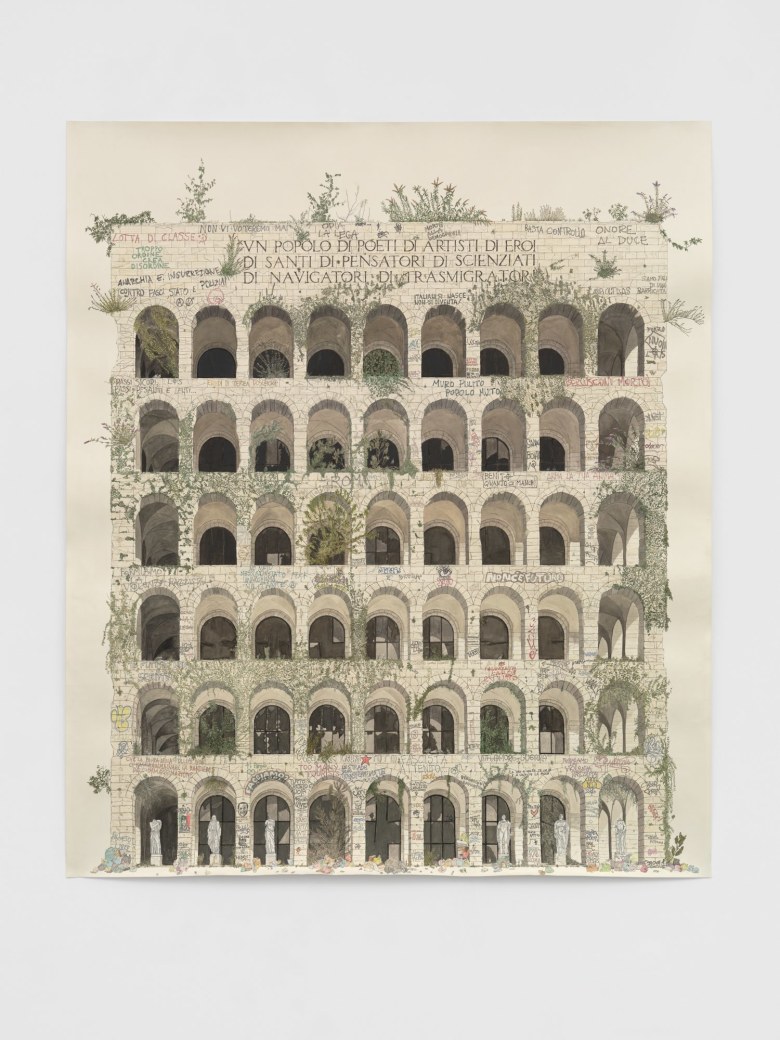
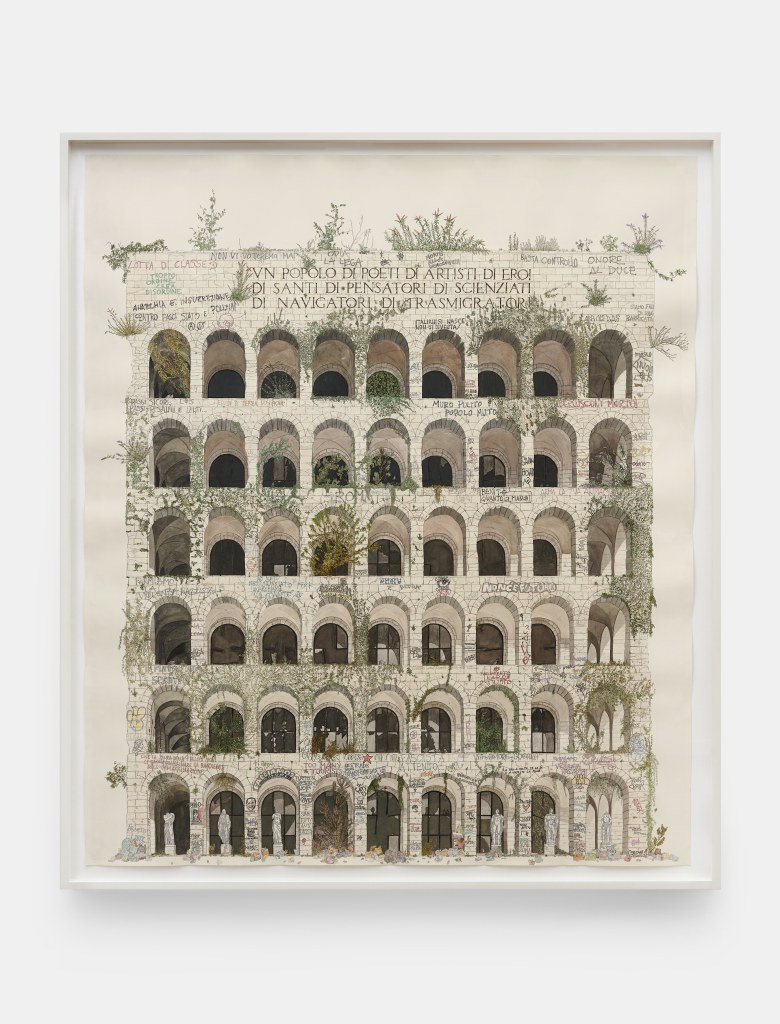
Palazzo della Civiltà Italiana in Ruins, 2024
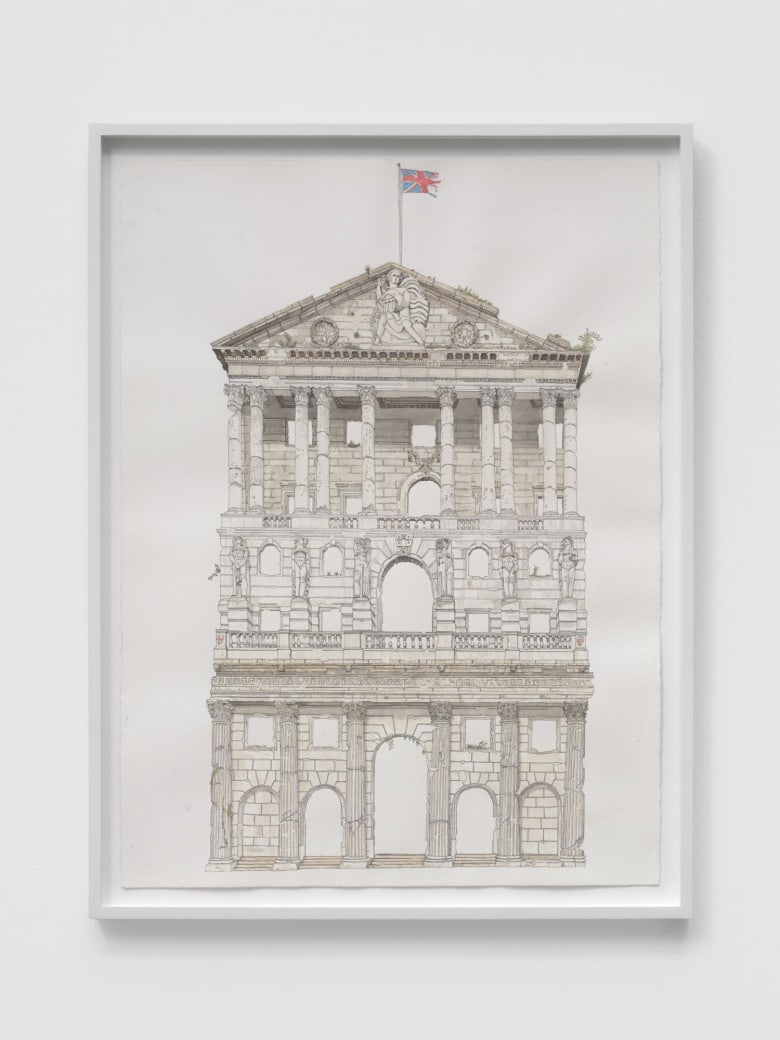
Imaginary view of The Bank of England in ruins after Joseph Michael Gandy, 2023.
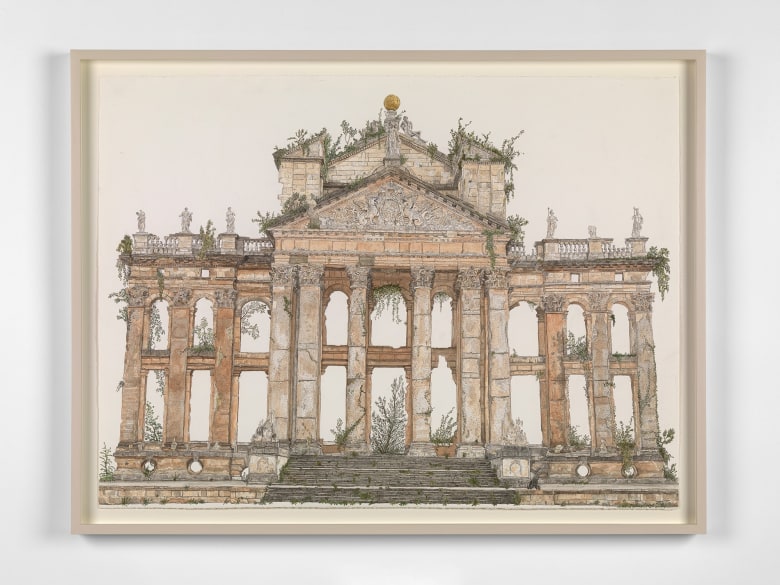
Imaginary view of Blenheim Palace in ruins, 2023.
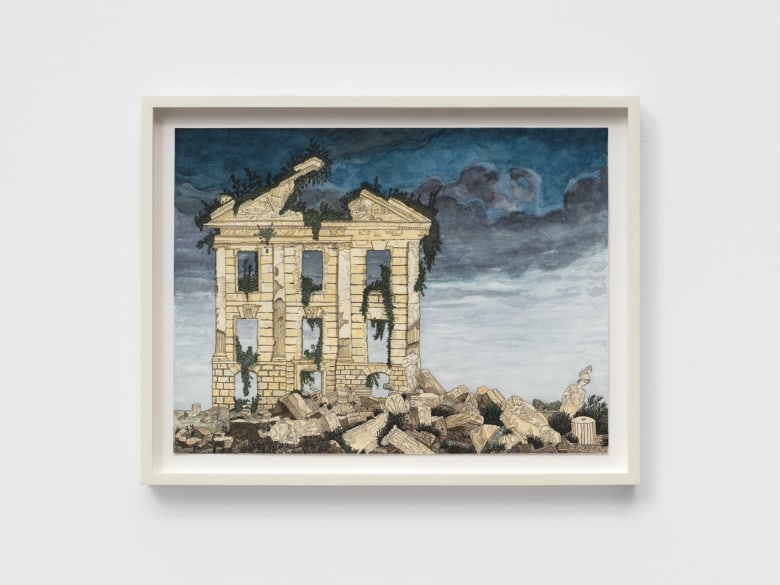
Imaginary view of Chatsworth House in ruins, 2022.
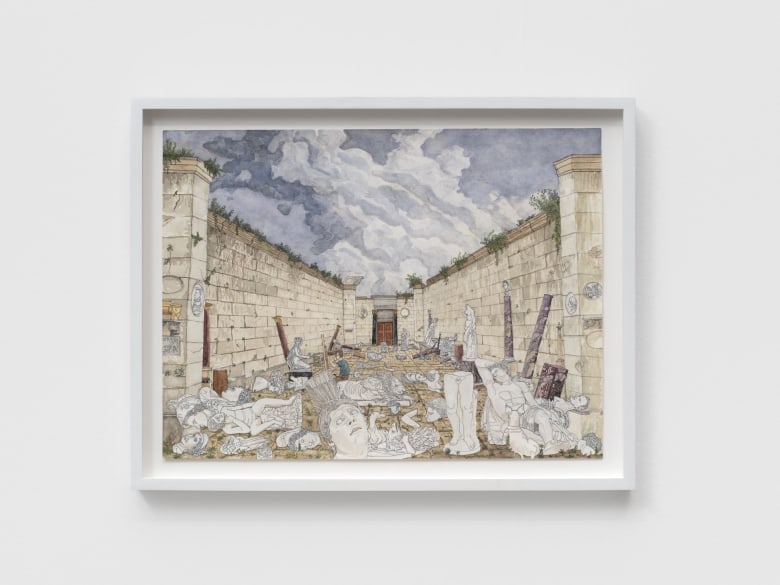
Imaginary view of The Chatsworth Sculpture Gallery in ruins after Hubert Robert, 2022.
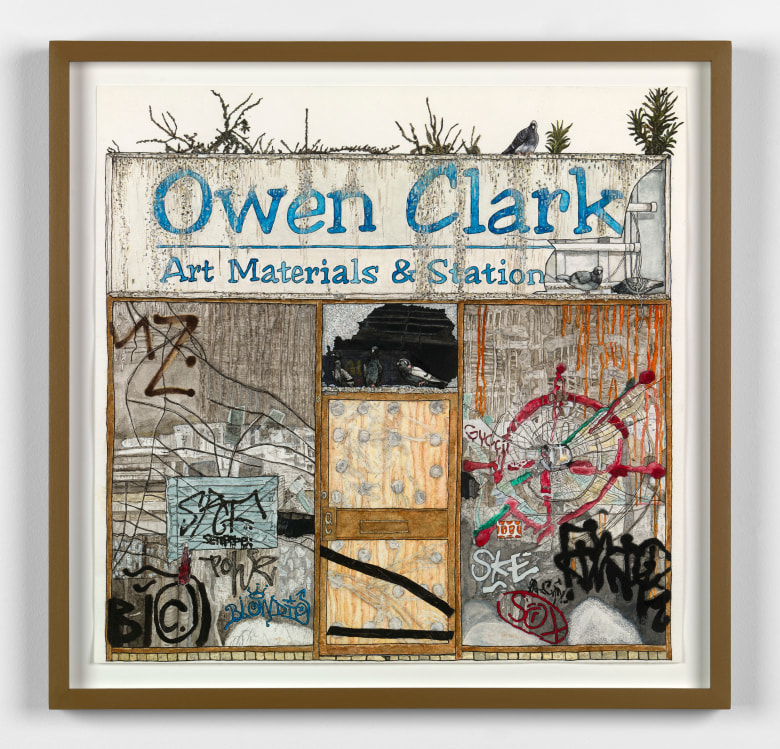
Imaginary view of Owen Clark in ruins, 2022.
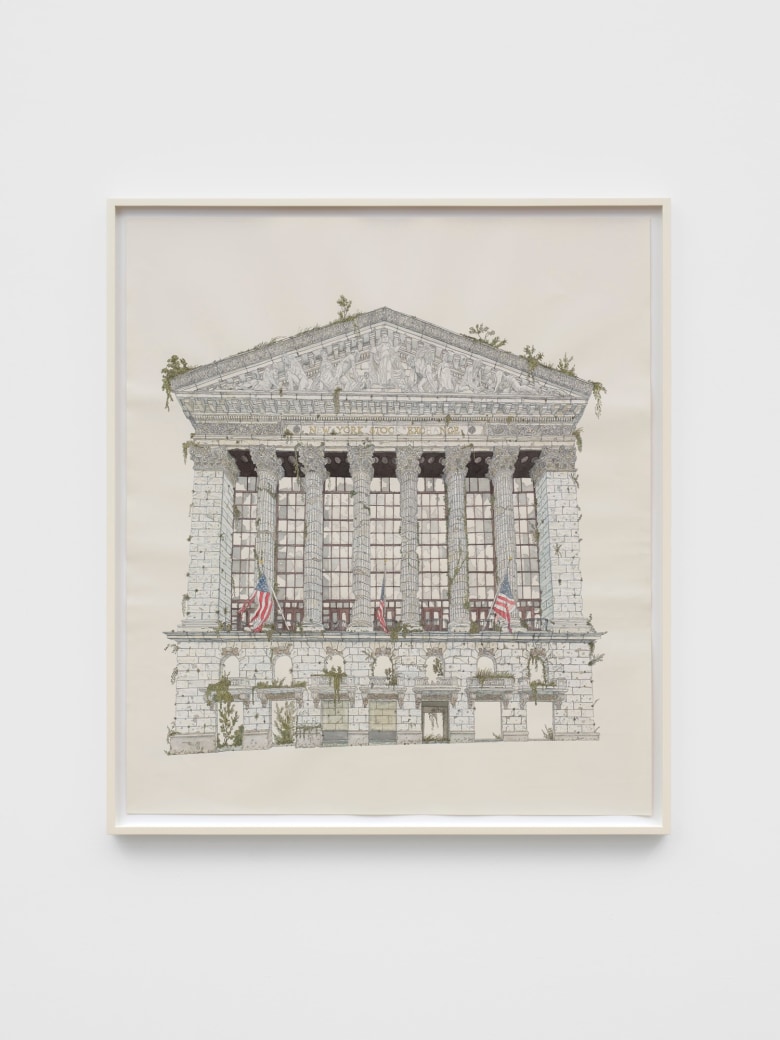
New York Stock Exchange in Ruins, 2024.
Michael Landy’s Future Ruins series engages with Landy’s ongoing fascination with architectural ruins and the attendant questions they reveal around value, history, time, loss and nostalgia. Landy follows a long tradition of artists captivated by ruins, both real and imagined. European Academic painters and architects of the 18th century often turned to the motif to depict a romanticised, idealised vision of antiquity, as well as a site of exchange between antiquity and the modern day, one architect and another. In the 18th century it was also fashionable to rediscover and recreate ruins, with many deliberately dilapidated ‘decorative’ artificial ruins erected in parks in England and France in the latter half of the century.
In his work, Landy mines this metaphorically rich history of the ruin, both invoking and subverting the stylistic and conceptual tropes associated with this iconography. For his Family Ruins series of drawings produced in 2021, Landy turned his fastidious draughtman’s eye to studies of derelict crofter cottages found abandoned and overgrown throughout the countryside of Ireland, the artist’s ancestral home. In recreating these humble and disregarded structures with meticulous detail and rich colour, Landy lends a quiet grandeur and significance to a simpler way of life and an overlooked history.
Landy’s Future Ruins series takes as its initial inspiration an eighteenth- century watercolour by Joseph Michael Gandy depicting an imagined view of the Bank of England as a ruin. The work, formally titled Architectural Ruins – A Vision (1798), was commissioned by Sir John Soane, who from 1788 to 1833 served as surveyor to the Bank of England responsible its architectural alterations and additions, and is today held in the permanent collection of Sir John Soane’s Museum, London. Gandy’s watercolour shows the rotunda of the imposing building as an aestheticised Roman ruin, its atmospheric treatment representative of contemporary Romantic depictions characterised by imposing scale, dramatic perspective and evocative lighting.
Informed by Gandy’s picture, Landy reimagined the Bank of England as a ruin with its grand structure now hollowed-out and only the façade remaining. This recognisable façade is seen here in decay, as is the Union Jack still perched on top, in a vision of societal decay. Other works in the series imagine crumbling ruins of Chatsworth House, which was constructed in the 1550s and has since been home to sixteen generations of the Devonshire family. Styled after the French eighteenth-century Romantic painter Hubert Robert, Landy’s scenes imagine the stately house as decayed remnants in the process of being swallowed back into nature by overgrown vegetation. Works in the expansive Devonshire Collections held at Chatsworth are also seen in dissolution: the contents of its sculpture gallery appear as abandoned fragments returning to earth, amidst which Landy himself is seen, tools in hand working at his easel. The series also depicts Ilford’s much- loved independent shop Owen Clark, Landy’s favourite art store during his childhood which has since shuttered permanently. A site considered foundational to Landy’s journey as an artist, this imagined storefront speaks to the sentiments of nostalgia and loss embedded in the concept of the ruin, further expanding on its complex emotional and political registers.
